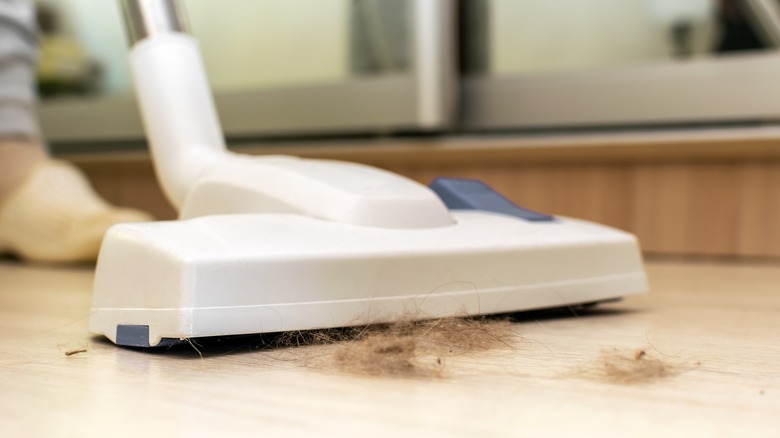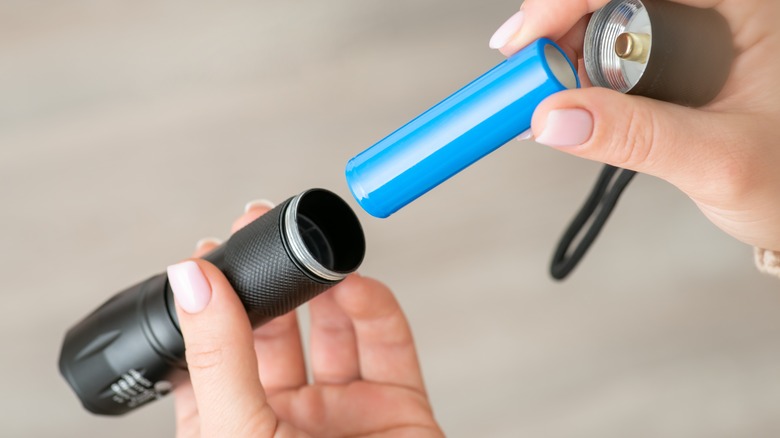Try This Easy Hack For Clean Floors If Your Vacuum Doesn't Have A Built-In Light
Have you ever finished vacuuming and sat down to relax, only to see a bunch of dirt, hair, and dust that you somehow missed? It's not that you're doing anything wrong. It's just that it's hard to see all those details from above; the floor is at a distance and doesn't always get much light. That's where an extra light can come in handy. Some vacuums come with lights integrated into the frame already. But, even if your vacuum doesn't have a built-in light, you can improvise with a flashlight or headlamp. You can even buy a special light attachment just for this purpose.
While it might seem like an extra perk, vacuums have featured lights for decades, as far back as the 1930s. Nowadays, some vacuums from brands like Dyson feature stronger lights for better visibility. The right light can make it easier to see dirt and debris and allow you to focus your vacuuming efforts where they're most needed. Instead of doing a few passes and then stopping, you'll know when you've gotten everything and keep your floors clean for longer. Plus, you can avoid accidentally running over items you should never use your vacuum on, like coins and jewelry, and more effectively clean up broken glass. Instead of splurging on a whole new vacuum, here's how to add some illumination to your current vacuum for cleaner floors.
How to add a vacuum light
There are a few different ways to add a DIY light to your vacuum set-up. One option is to attach a magnet to the side of the vacuum head. Then attach the opposite magnet to a small portable flashlight. This allows you to easily pop the flashlight on and off of the vacuum using the magnets. Another option is to use electrical tape to tape the flashlight to the side or top of the head. Make sure the flashlight is at floor level so it's most effective.
Alternatively, you can use a headlamp while vacuuming instead, either by attaching it to the vacuum or wearing it yourself. If you wear it, the light isn't at floor level, but it still helps highlight the dust. As a bonus, it allows you to easily focus the light on the spots you're about to clean, unlike an attached light.
If you prefer a store-bought solution, you can buy a light attachment that's specifically designed for vacuums, like this dust detector vacuum light from Walmart. These products have the same basic idea as the DIY version — they're rechargeable lights that attach to the side of the vacuum head.
Which light works best for vacuuming?
For best results, choose a flashlight, floodlight, or headlamp with a high enough light output to illuminate floor debris. Around 250 lumens and up is considered "high output" and should be a safe minimum, but some people have had good results with much brighter lights. A model with more light output reduces the chances of you needing to close the curtains or turn the lights down to see the illuminated areas (which some store-bought models say might be necessary). In general, a whiter light is better than a warmer one for this purpose. Or, for a Dyson-like effect, use a green LED flashlight instead. Green lights are also helpful in the daytime when white flashlights may not provide as noticeable an effect.
Another consideration is battery life. Look for a flashlight or headlamp that can stay on during the entire time you use your vacuum, and that won't need to be removed and recharged after every use. A few hours of battery life should suffice, but the longer it lasts, the more convenient it will be.

